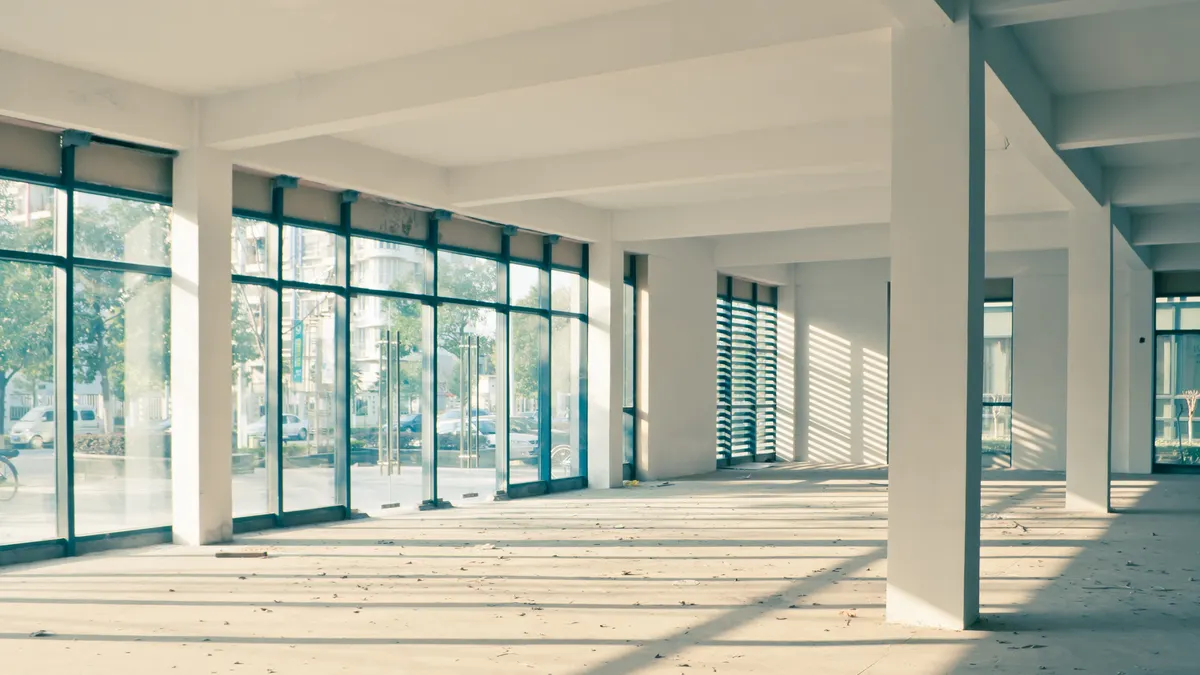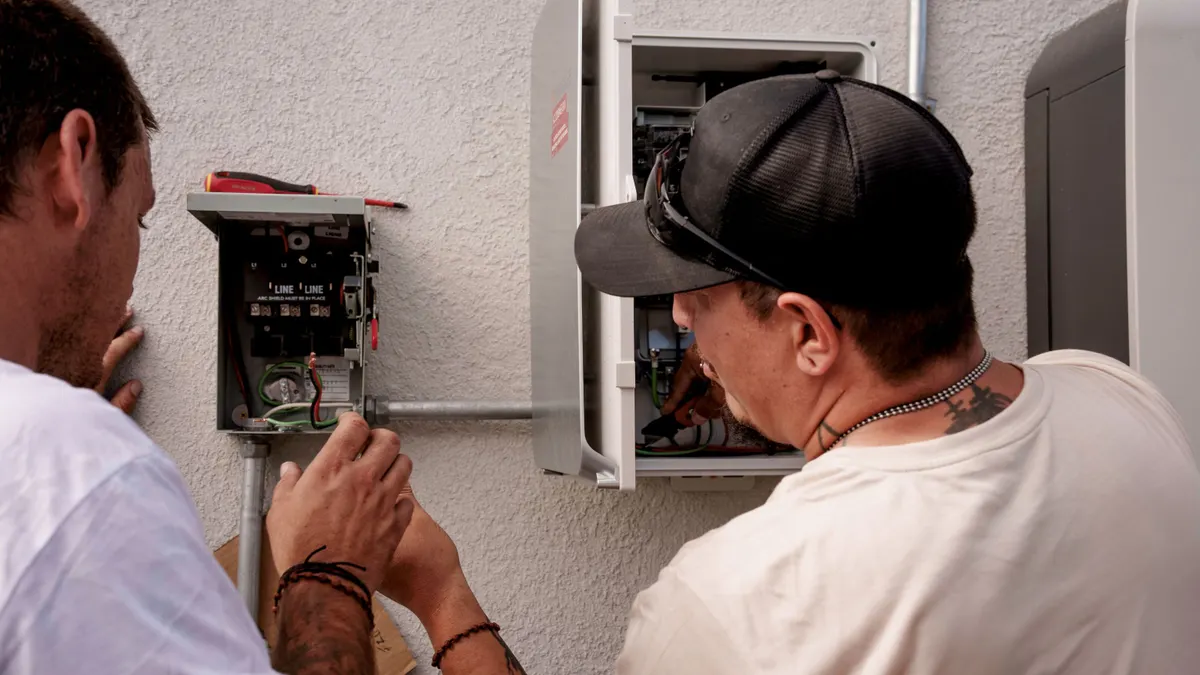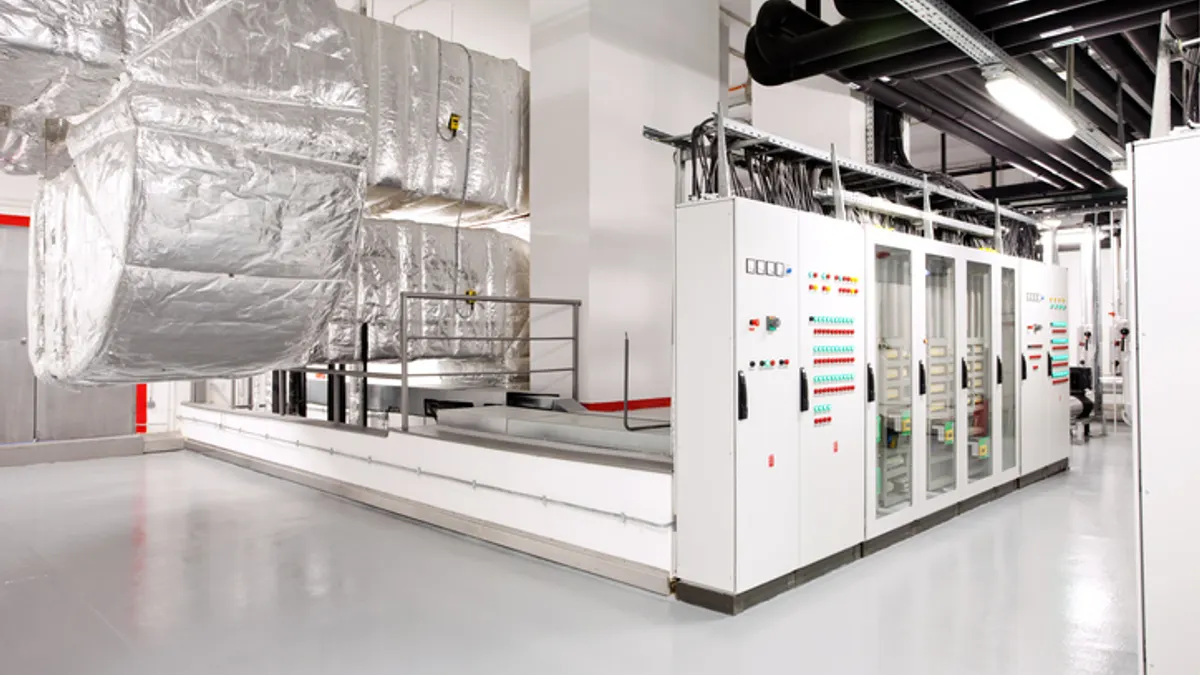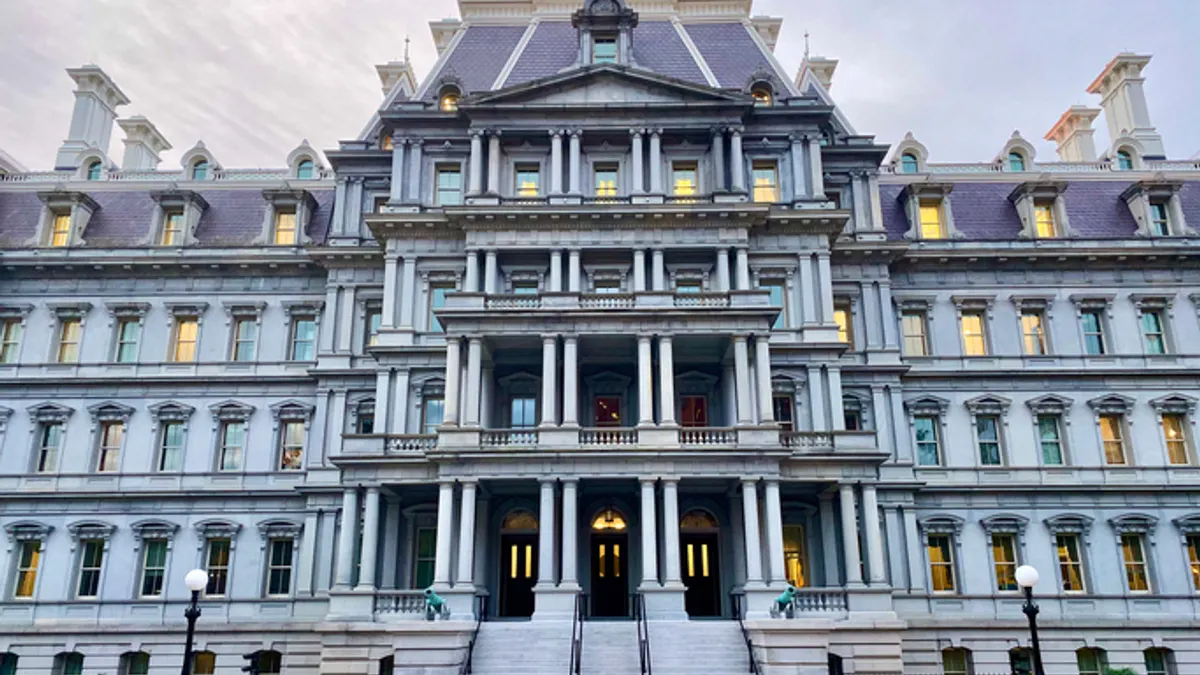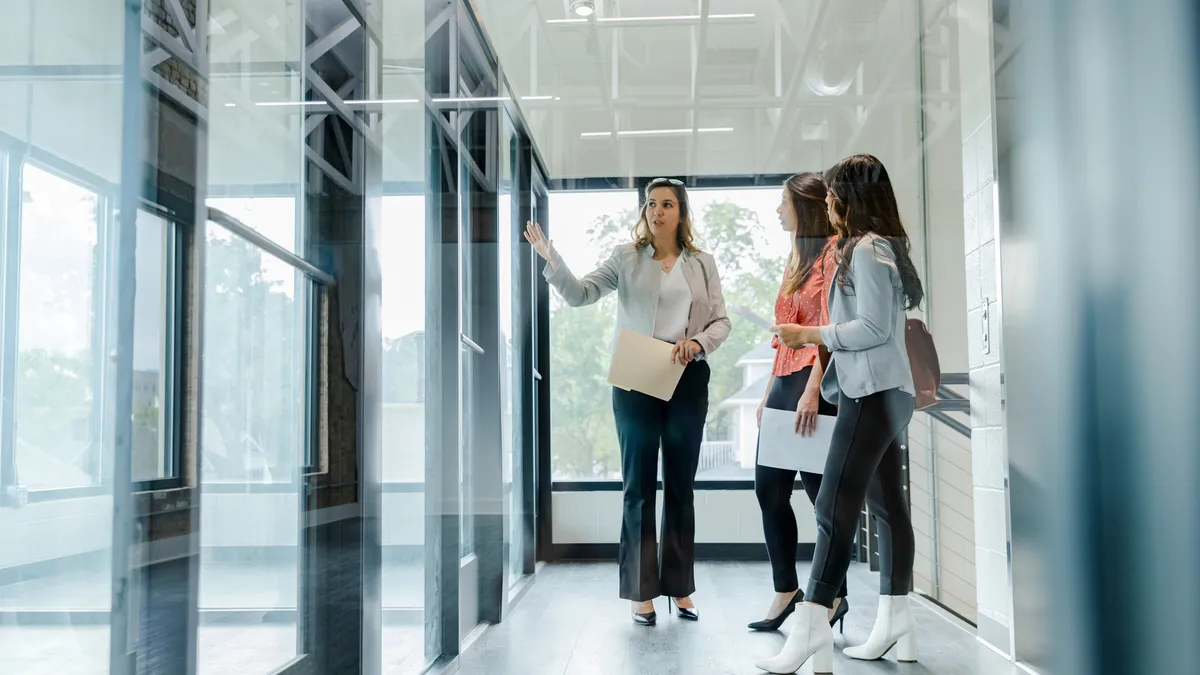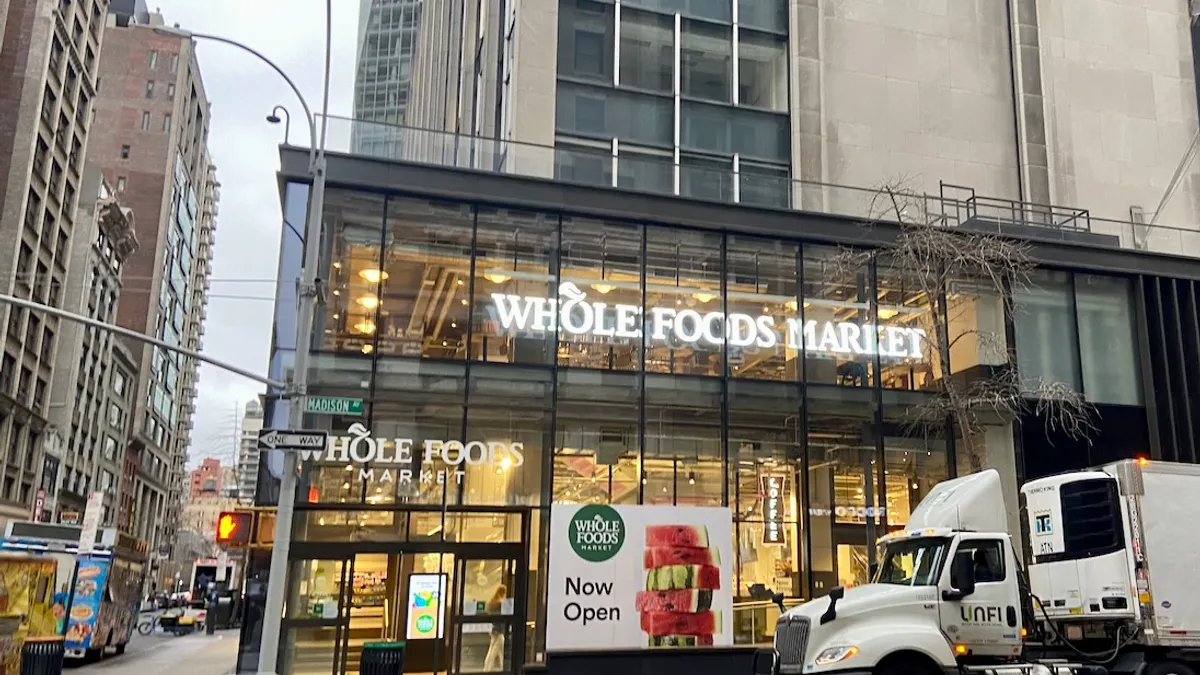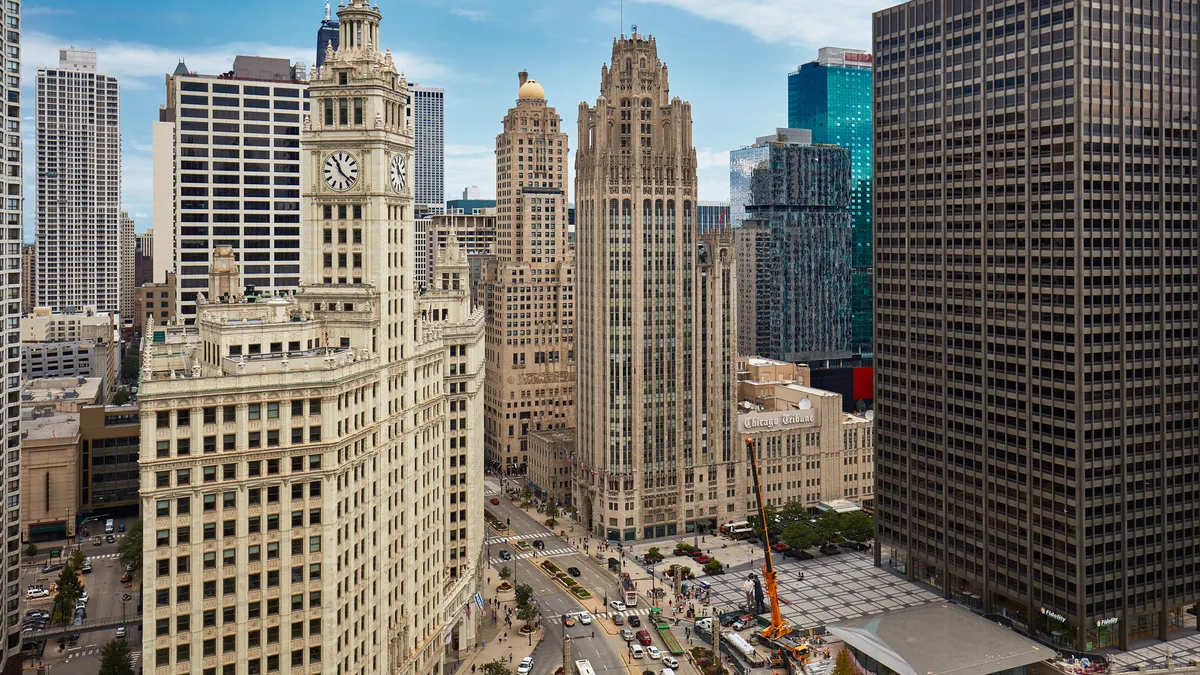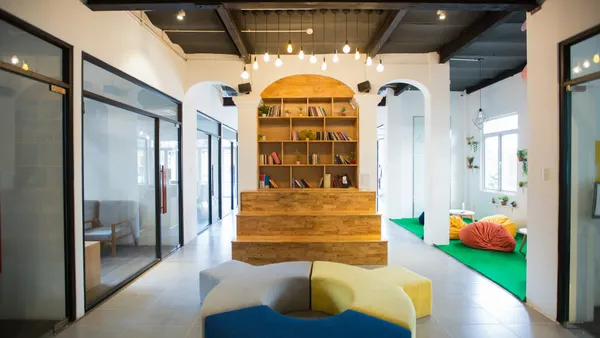Office conversions are becoming more popular across the U.S. as building owners work to repurpose vacant space amid record-high vacancies and cities seek to address housing shortages, Yardi said in its June 2025 National Office Report on Wednesday.
The average national vacancy rate remained high in May at 19.4%, down 30 basis points from April but up 160 basis points year over year, according to Yardi Matrix data.
Conversions, along with demolitions, will reduce U.S. office inventory more than new office space deliveries will add to it this year, which should help reduce vacancies and support the market’s recovery, CBRE says in a report released June 3.
Among the 58 markets CBRE tracked, it expects 12.8 million square feet of space to be converted to other uses this year and an additional 10.5 million square feet to be demolished. The firm estimates just 12.7 million square feet of new office supply.
Both conversions and demolitions have accelerated since the COVID-19 pandemic, with the U.S. conversion pipeline of planned and underway projects reaching 81 million square feet across 44 markets in May, per CBRE’s report. This is 1.9% of total U.S. office inventory, up from 1.7% of inventory just six months ago, CBRE says.
The number of conversion proposals has increased every year this decade, Yardi says. From 2018 to 2024, the U.S. averaged 58 office conversions annually, CBRE notes; 2024 saw 94 projects totaling 13.1 million square feet completed. About 68 conversions totaling 12.8 million square feet are expected to be completed this year, CBRE says.
Not all office buildings are suitable for conversion, however. Many office buildings constructed in the 1970s and 1980s have large floorplates that make them less suitable for multifamily units, CBRE says. As a result, older buildings account for over half of demolitions and only 35% of conversions, according to the CBRE report. Building size and location, rising construction costs, less labor availability and persistently high interest rates also factor into conversion or demolition decisions, adding further impediments, CBRE says.
Just over 70% of planned and active office conversion projects by square footage are conversions to multifamily housing, CBRE says. This is due to stronger fundamentals in the multifamily housing market, which has seen lower vacancy rates and higher rents compared with the office sector, and easing regulations and incentives at the city level meant to address housing shortages and increase property tax revenues, per the CBRE report.
“While impactful at the local level, [office conversions remain] a modest contribution to the national housing supply,” the firm says.
Office conversions to life science uses have declined from their pandemic-era peak, when they were the second-most-common type of conversion and new construction lagged demand, CBRE says. Now, hotels have taken that spot, making up 8% of total office conversions by square footage, per the report.
Execution varies by city
Conversion activity across the U.S. varies greatly by market, depending on building values, inventory age, construction costs and the supply of experienced developers, CBRE says.
Manhattan has one of the lowest vacancy rates in the U.S, meaning unused space quickly becomes targeted for adaptive reuse, per the Yardi report. New York City established the Office Conversion Accelerator program to assist building owners and operators with conversions by analyzing the zoning feasibility of individual projects and helping secure necessary permits.
Manhattan currently has 10.3 million square feet of conversion space underway or planned, leading the nation, CBRE says. While this is partially due to market size, NYC Mayor Eric Adams’ “City of Yes for Housing Opportunity” zoning reform is also spurring conversion activity, per the report.
As of May, Boston had 15 office-to-residential conversion projects totaling 762 units either proposed or approved, with similar conversion projects moving forward in other Massachusetts cities like Worcester and Lowell, Bisnow reported Tuesday.
Massachusetts in March launched a new program to support redevelopment of commercial properties into housing. As part of the Commercial Conversion Initiative, MassHousing allocated up to $1 million in planning funds for technical assistance to these projects, with the state also awarding millions of dollars more to office building landlords in downtown Boston and Worcester to convert their buildings, Bisnow reported.
San Francisco is working to increase its office-to-residential conversions through its Commercial to Residential Adaptive Reuse Program, which includes tax waivers and eliminates certain fees, Yardi says. The city, which has one of the nation’s highest office vacancy rates at 28.4%, also recently approved the creation of a downtown revitalization financing district that aims to incentivize conversions by reinvesting the increase in property tax revenue that such projects generate to help offset development costs, the company says.
“With the destruction of office values being realized, it now is up to cities to incentivize conversions to maximize potential, or at the very least, reduce the red tape and regulations that make an already difficult project even harder,” Peter Kolaczynski, associate director at CommercialEdge, said in a statement.


